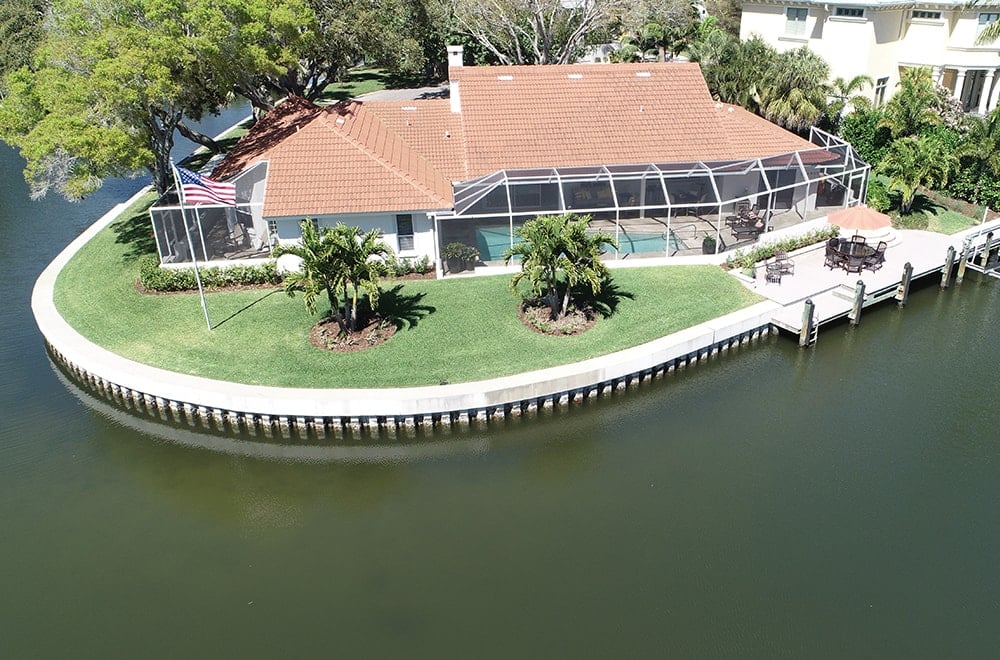
When planning seawall construction, many factors come into play, including the cost, materials, and design. These factors will all influence the end cost of the project. The cost of a seawall also depends on the location and depth of the waterway in which it will be constructed.
Engineering and permitting services can cost anywhere from $2,000 to $5,000 per job. The height of the seawall will also influence its cost, as it will require more materials and time to construct it than a lower-altitude sea wall.
Cost
The type and cost of seawall construction depends on several factors. The size, materials, and proximity of the jobsite all affect the cost. Future erosion rates and wave loads also factor in. Some seawalls include facilities such as walkways or steps. These costs can be estimated through the estimate process. Contractors can help you make the best decision based on the type of seawall you want. Below are a few of the factors that affect the cost of seawall construction.
A seawall is a large investment. On average, it costs anywhere from $150 to $800 per linear foot. However, the price varies widely based on the type of materials, the length, and the difficulty of the project.
Materials
While there are many options for materials, steel is perhaps the most popular choice for seawall construction. While steel is costly initially, it is one of the strongest materials. It can be installed in just about any substrate and there is no limit to its height. It also requires little maintenance.
However, steel needs to be re-coated periodically to prevent rust, so proper care can significantly prolong its life. Vinyl and plastic are other alternatives, and they have different aesthetic benefits. However, neither material is as strong as concrete or steel, nor neither are suitable for all soil compositions.
Wooden seawalls can be a great way to protect waterfront properties and enhance their aesthetic appeal. Wooden seawalls can also protect your property against marine organisms, but wood is prone to decay and rot and needs to be treated properly. The size of your seawall will help you determine which material is most suitable for your project. Wood is also an inexpensive option for freshwater retaining walls, but is less durable in salt water.
Design
In coastal areas, design of seawall construction is essential to minimize erosion and protect properties. A seawall that is constructed without proper toe protection can collapse due to overtopping. This type of erosion usually occurs when an individual high wave hits the seawall.
Overtopping water can be particularly damaging to low structures, as it saturates the soil and increases pressures from landward. In extreme cases, the foot of the structure may collapse. The slope of the seawall should be at least 1:3 or higher.
Although cost is a major barrier to seawall construction, it must be taken into account. Seawalls require extensive environmental data for effective design. Unfortunately, in developing countries, such data is often unavailable or very expensive to collect. Additionally, high-quality data may not be readily available in the area, making it difficult to carry out the necessary studies.
Ultimately, good design means better protection for foreshore assets and minimal future maintenance. In a recent case study of Fiji, Mimura and Nunn highlighted the issue of inappropriate design. Inappropriate design leads to negative effects, including wave reflection and toe scour. Furthermore, blindly copying design ideas results in exaggerated socio-economic and environmental costs.
Placement
The placement of seawall construction is critical to protect coastal structures from wave action and prevent erosion. A seawall is a massive structure that runs parallel to the shoreline at the land/water interface. Depending on the site, different types of seawall construction may be used, including gravity, rubble mound, stone revetment, curved face, and filled gravity. The height of seawall construction must cover the height difference between the shoreline and the mainland.
Wave loadings are significant on seawalls. This is because they are designed to dissipate wave energy and remain stable even under extreme wave loading. Furthermore, the effects of SLR, increased wave heights, and storminess must be considered. It is best to consult a professional when determining the proper placement of seawall construction.
Environmental impact
A seawall’s construction has an enormous impact on the environment. Not only do they reduce beach access for beachgoers and emergency services, but they also affect recreational use and aesthetically-appealing beaches. Furthermore, seawalls impose a heavy wave loading, reducing the amount of available sand. As such, the construction of a seawall can have a negative impact on beaches that depend on tourist and business revenue.
Waves, which are the main cause of scour and erosion, can be reduced by installing a seawall that has a slope. The slope helps to break waves and dissipate energy. Seawalls are often constructed on an indefinite basis, and they are constantly under enormous wave loads. Moreover, seawalls must withstand storminess and SLR events. The following are a few key factors to consider before constructing a seawall.
